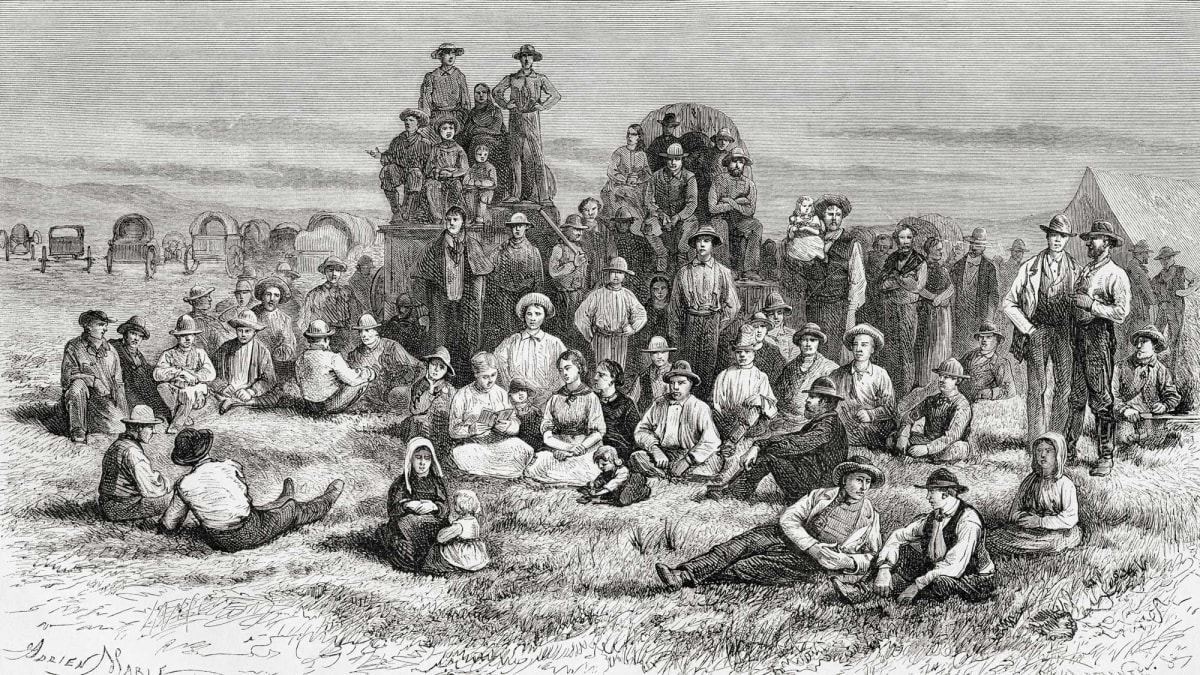
At the October 1860 General Conference, Joseph W. Young, a nephew of Brigham Young, reported on what he called “the science of ox-teamology.” He explained how, as an experiment to reduce Mormon emigration costs, he had driven oxen on a round-trip journey from Utah to the Missouri River and back in one season. Earlier practice had been for Church agents to purchase animals and equipment in the mid-west for Mormon emigrants to use to travel to Utah. This was expensive and Church leaders hoped Young’s experiment would succeed.
Young’s freight train, composed of thirty-one wagons and each pulled by a team of four oxen, pulled out of Salt Lake Valley and headed east on 27 April. John W. Woolley was Young’s assistant. Like Young, he had already crossed the plains several times. Milford B. Shipp was the clerk. There were seventy-eight people in the company. They went up Parley’s Canyon, traveled through Parley’s Park, and down the Weber River to Coalville, then up Chalk Creek. They did this to avoid the miry holes so prevalent in the early spring in Echo Canyon. Even so, they encountered some fairly steep hills near the coalmines on the Weber. At Muddy Creek, Edwin D. Woolley parted from the company with seven mule-drawn freight wagons. Woolley stayed on the established road while the Young blazed a new route down the Muddy, bypassing Fort Bridger. On 5 May a group of eastbound missionaries overtook Young’s company. They spent the night with them and followed them to the mouth of the Muddy. After that, the missionaries crossed the stream and moved on ahead, taking with them three men from Young’s train. It had been snowing a little, and they were buffeted by a cold wind. By 24 May the train was eight miles above the Three Crossings of the Sweetwater. On 22 June they had reached Wood River Center, Nebraska Territory. The local newspaper reported that the company consisted of seventy-five men and three women.
Young started from Florence, Nebraska Territory, on his return trip on 23 July. They headed out and traveled about five miles the first day. There were about one hundred people including emigrants, 340 head of cattle, and twenty-four horses and mules. Young hired emigrants as teamsters, cooks, and laundresses. They made their first camp at the Papillion. They reached Deer Creek on 5 September. On 3 October, fifty-one wagons arrived in Salt Lake City during a terrible wind and dust storm. Of the arriving outfits, thirty belonged to Young’s ox-drawn Church Train and nine were the mule-drawn freight wagons of E. D. Woolley. The other twelve wagons must have belonged to emigrants and at least four of the wagons belonged to William H. Folsom. Folsom was an experienced builder who replaced Truman O. Angell as Church Architect in 1861. He later played a major role in designing and building the Salt Lake Tabernacle. Young’s out-and-back oxen arrived in good condition despite pulling a heavy load that included twenty-two tons of machinery for a paper mill.